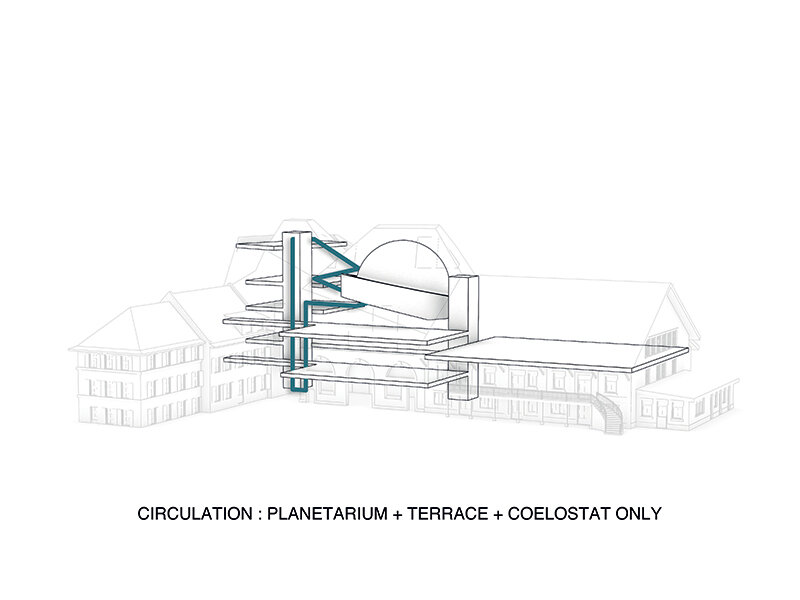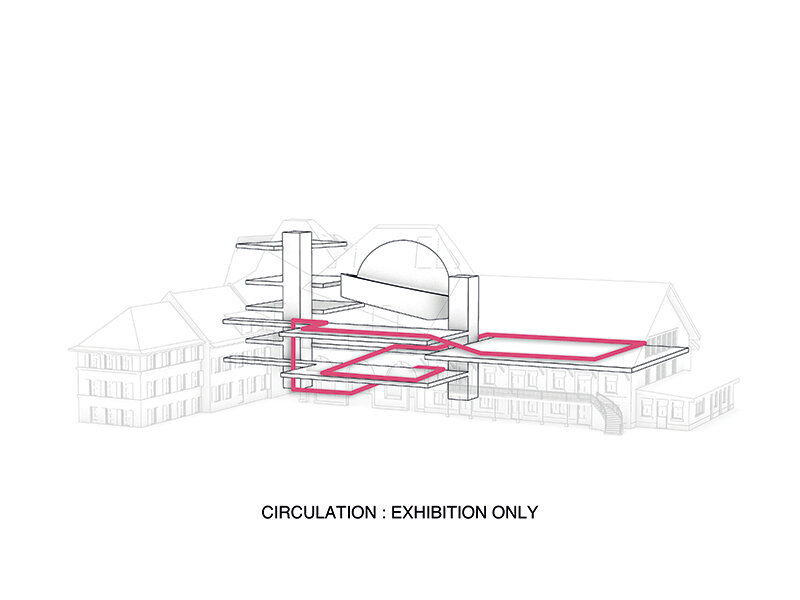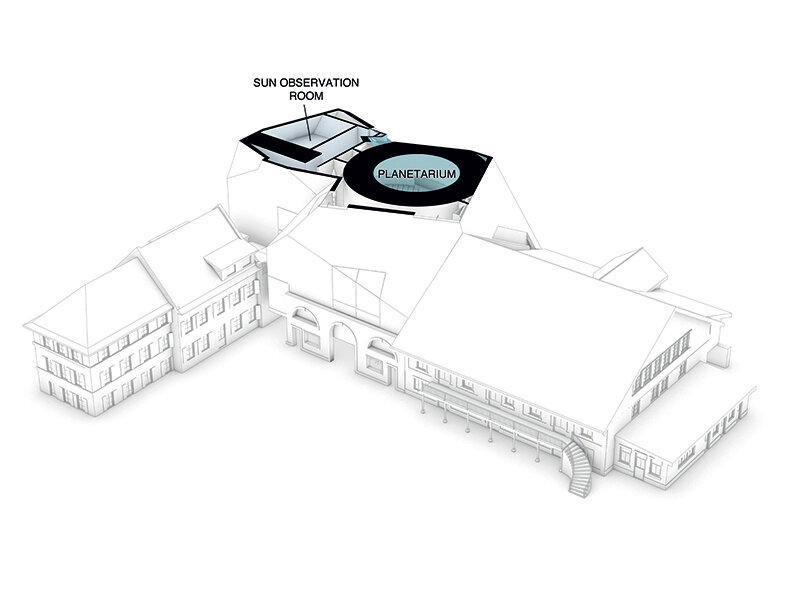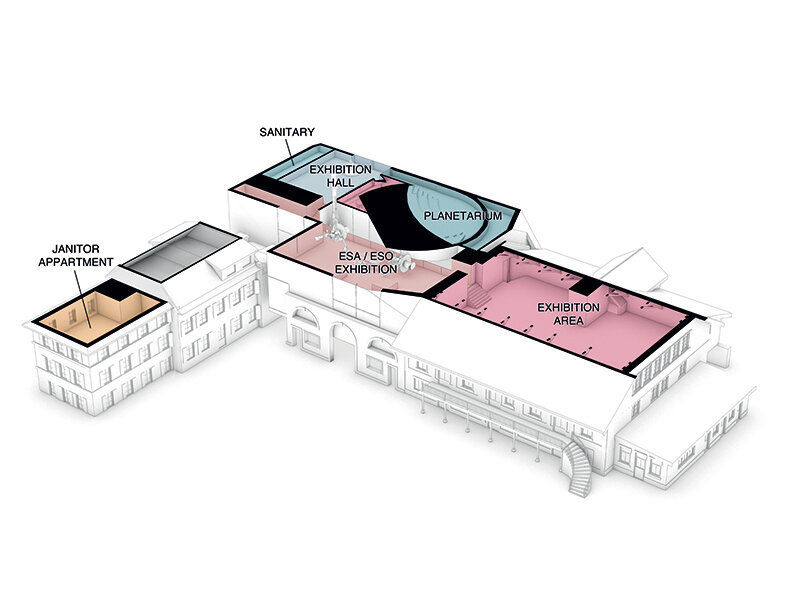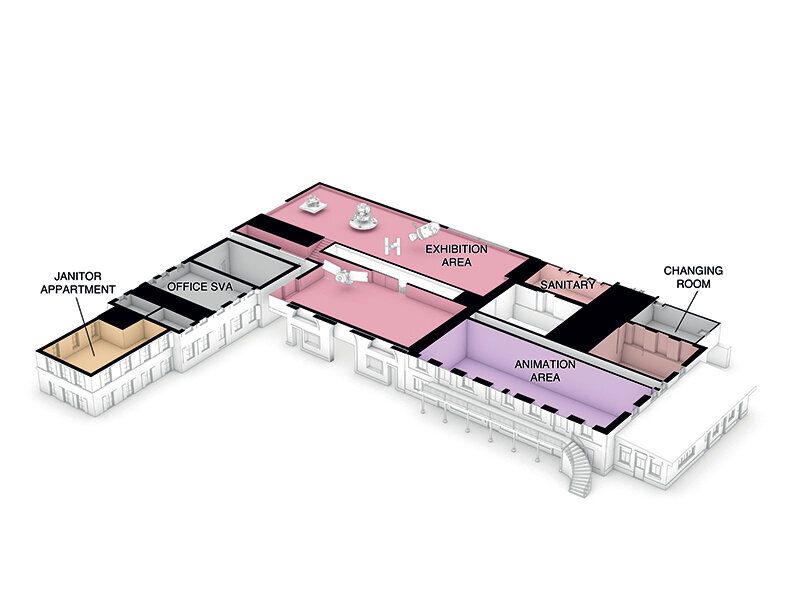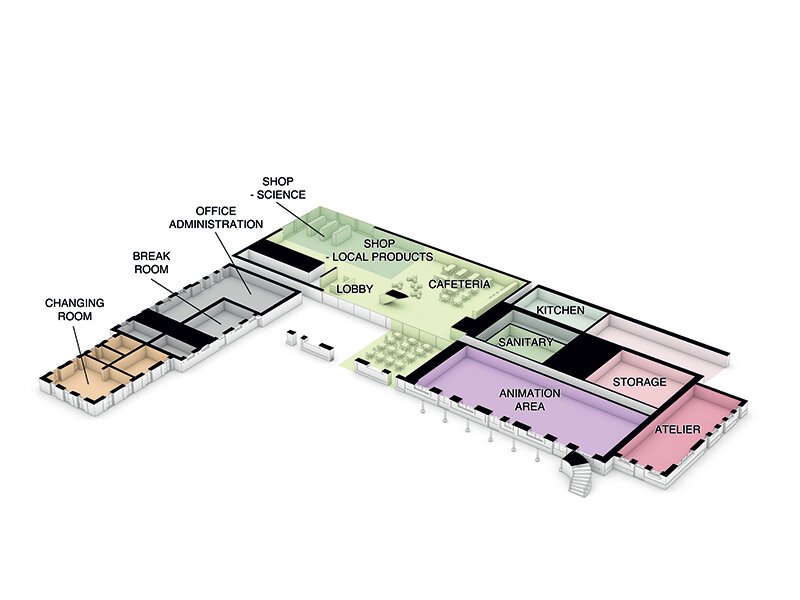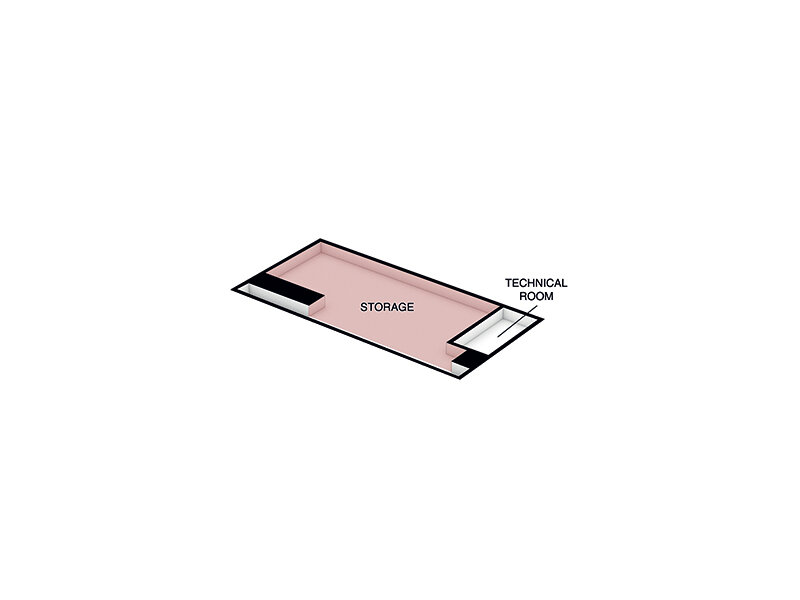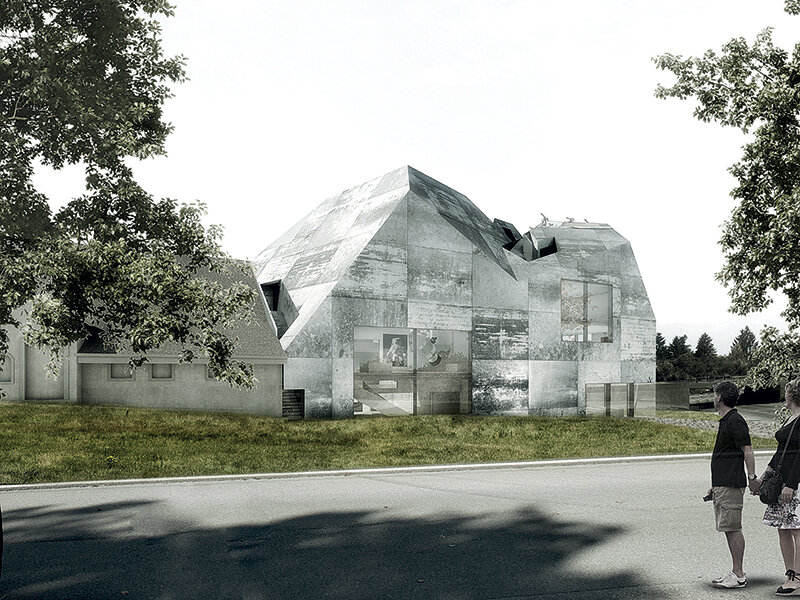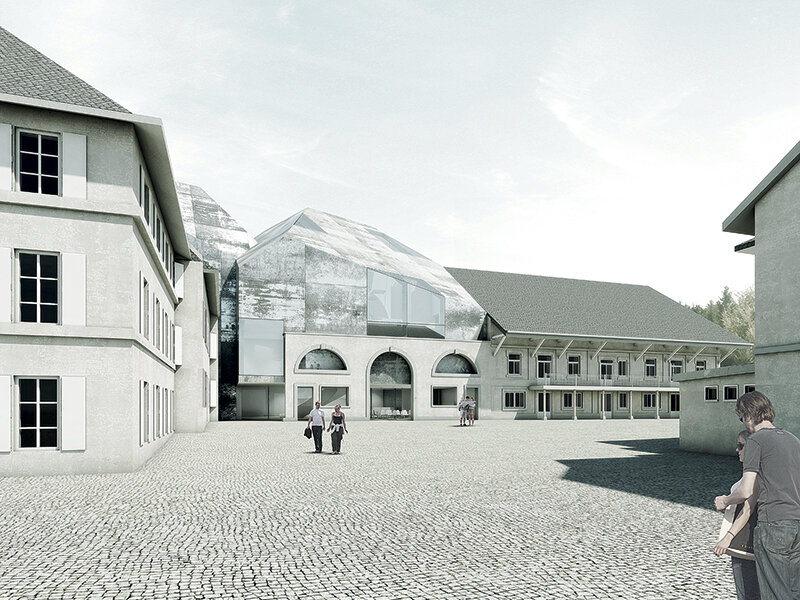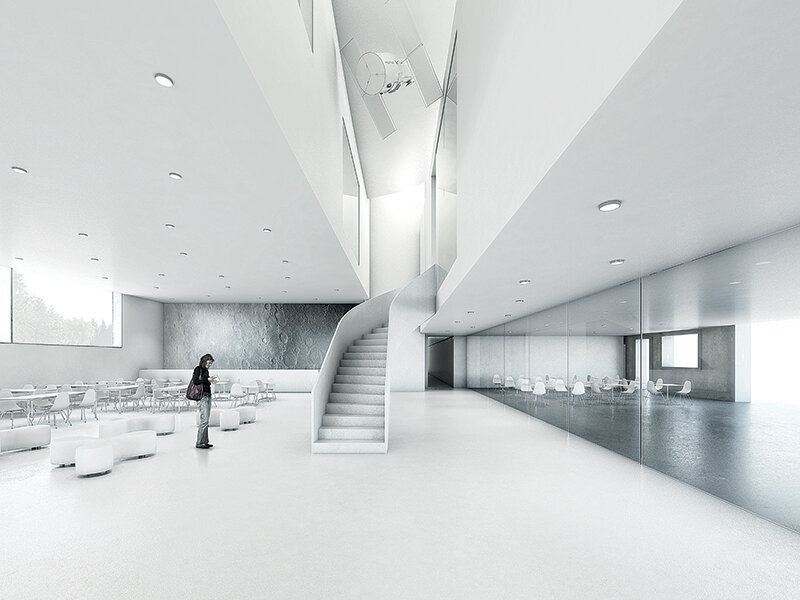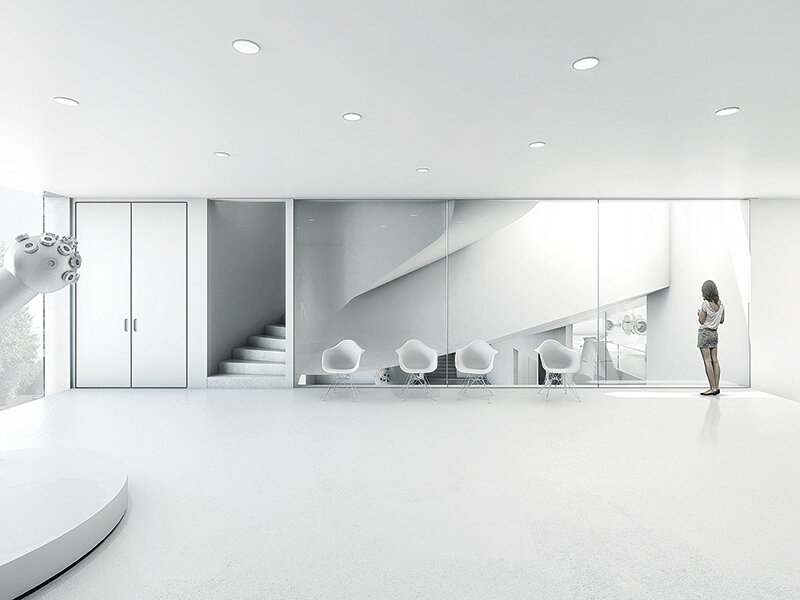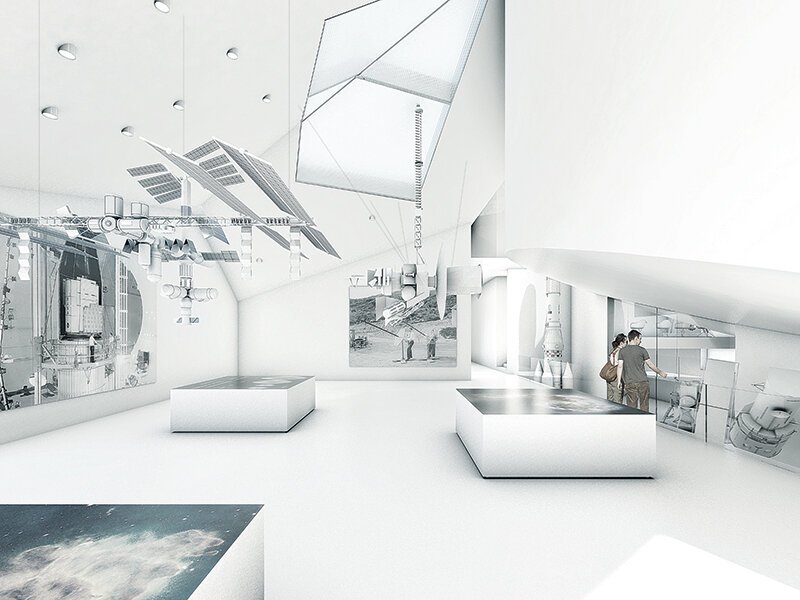STUDIO DMTW: Planetarium / Planetarium - Lausanne
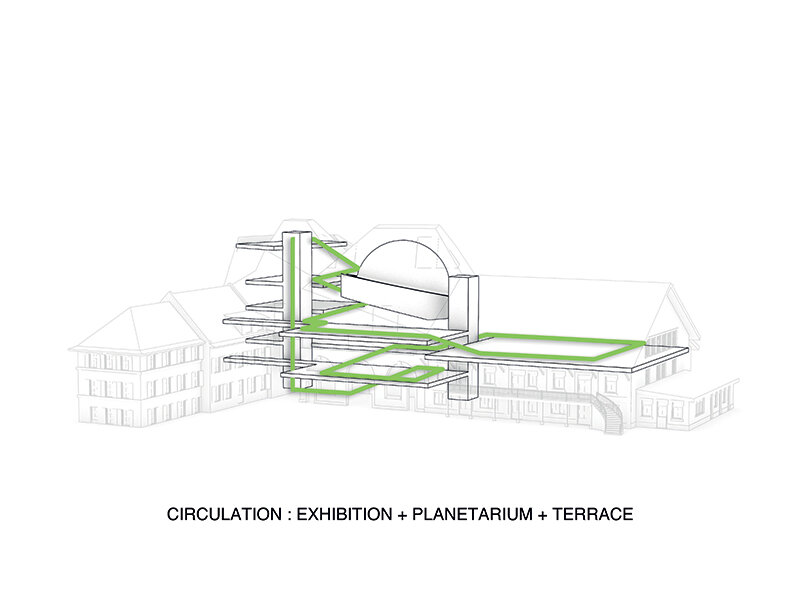
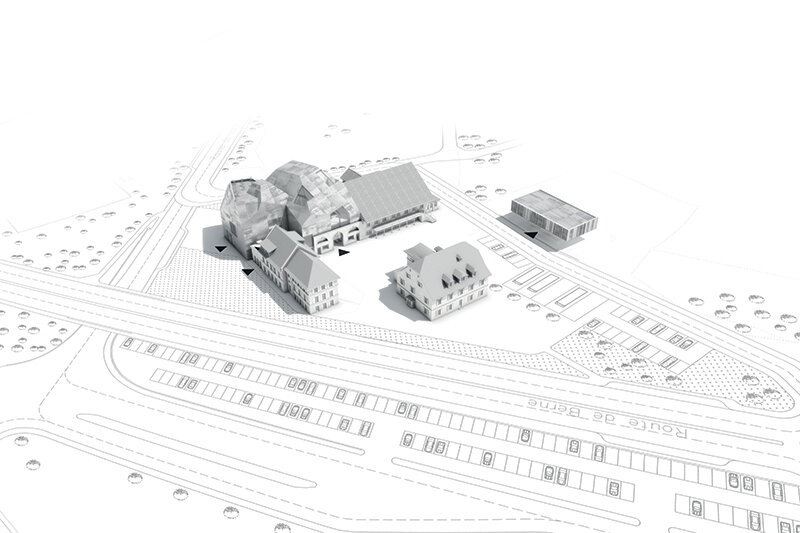
Anul/Year: 2012Status: Concurs/CompetitionProgram: Planetarium, Spațiu expozițional/Typology: Planetarium, ExhibitionLoc: Lausanne, Elveția/Location: Lausanne, SwitzerlandSurface: 4.800 sqm/Size: 4.800 sqmTeam/Team & credits: Marc Anton Dahmen, Maximilian Schmitz, Bettina Lemoine, Mint Penpisuth Wallace
| In a society characterized by a desire to understand the world and its evolution, the creation of a space dedicated to the presentation and promotion of science is a significant cultural contribution. A building that invites visitors to actively learn and discover about space, nature and the connections between them. Therefore, one of the main objectives of this project is to identify and highlight possible synergies between the functional areas. The public part of the architectural program can be divided into two distinct groups of functions, the planetarium (with the solar observatory and a viewing platform) and a large exhibition space (with areas for presentations and workshops). The links (circulations) between these spaces become very important. Different scenarios are possible. A good circulation through the building can make a visit to the planetarium engaging, by visually connecting to the exhibition space. On the other hand, a visit to one of the two exhibition spaces can culminate in a visit to the viewing platform, because both routes end at the same point. However, in addition to this combination of circulation and functional connections, the specific character of the site also plays a major role. It is important that the new building fits into the existing structure and preserves its identity, without hiding or canceling its own. The new building should be perceived as a new element within the ensemble, but one that respects the historic value of the neighboring buildings. When the visitor enters the foyer of the planetarium from the courtyard or from the "Route du Jorat", he is greeted by a spacious area opening on two levels, offering a direct view of the current exhibitions. Here you will find the reception and information area, a small café, as well as gift shops and classrooms. A staircase leads up to the first exhibition halls and connects the existing and new buildings. The visitor continues up through the exhibition spaces until they reach the European Space Agency (ESA) information area. Now the guest can choose to visit the viewing platform, planetarium or solar observatory. If they wish, they can return to the foyer via the secondary circulation node. This is the second way to get to the planetarium. A direct route that bypasses the exhibition spaces but communicates with them through large glass openings. Although the intention was that the different functional spaces would interact with each other, there is also another scenario where the spaces are visited directly by elevator, thus facilitating access for people with disabilities. The design of the new building arises from the blending of new structural elements with the geometry of the old structure. As a result, the new building fits harmoniously into the old complex. The new volumetry is formed by taking the roof edges of the existing buildings. By rotating the individual roof volumes, the new building can be connected to the existing ridge and at the same time becomes an elegant solution for covering the new spaces. The roof and exterior walls will be covered with the same material, large zinc panels, thus simplifying the volumetry of the new building. The same principle will be applied to the interior design. The floor and walls will be painted white to give free rein to the interaction between light and interior space. This creates interior spaces suitable for exhibitions. |
| Creating a place which is devoted to showing and sharing science also means making a cultural contribution in the widest sense in a society which is characterized like no other by science and by the desire to understand our world and where we come from. A design that invites visitors to find out about and actively experience themes and correlations that exist within nature, research of space and nature poses a particular challenge. For this very reason, a task of this nature demands due respect. Logic and consequence on the one hand, respect for the culture and history of the place on the other hand play a major part in this correlation. Therefore, one of the primary objectives of this design is to identify and highlight possible synergies between the individual functional areas. The public section of the space program can be split into two distinct function groups, the planetarium (with its solar observatory and viewing platform) and a large exhibition area (with space for presentations and workshops). The possible links between them are of interest. Good circulation through the building can enrich the visit to the planetarium by opening up the exhibition, generating added value. On the other hand, a visit to one of the exhibitions can culminate in a visit to the viewing platform because both sections of the development terminate at the same point. However, in addition to this combination of circulation and functional connections, the specific character of the place also plays a major role. It is important to incorporate the new build into the established structure and to preserve the latter's identity without becoming hidden or even being untrue to itself. The new build may be identifiable as a new element within this ensemble, showing respect to the history of the buildings directly beside it. When the visitor enters the foyer of the planetarium from the courtyard or from the "Route du Jorat", coming from the opposite side, he is greeted by a spacious area from which an open air space gives him a direct view of the current exhibitions. This houses the reception and information area, a small cafeteria, as well as the gift shops and the classrooms. An inviting staircase guides you into the first of a series of exhibition rooms, split between the existing building and the new section in a spiral arrangement. This takes you from one to another and then on into the next one. The visitor continues to spiral upwards as he wanders through the exhibition. In so doing, he maintains visual contact with all the other areas due to the large openings leading out into the air space; this also makes it decidedly easier for him to negotiate his way around the building. The spiral ends with the information area of the European Space Agency (ESA), an area which is directly linked to the planetarium. After working his way through the exhibition, the visitor can choose whether to visit the viewing platform, the planetarium or the solar observatory, or whether to return to the foyer through the development core. Going the other way around, the opposite scenario so to speak, the development core, which is located behind the information area, leads directly from the foyer to the planetarium area. Here too, a large glass area once again forms the visual border with the surrounding functional areas. Having had a glimpse of the exhibitions, the visitors will be keen to visit them as they make their way back towards the foyer from the dome. The functions merge into one. Despite the intended interaction between the functions, the design and the arrangement of the space given over to the different operators naturally also allow another conceivable scenario where the planetarium is separated spatially from the exhibition area. All levels can be reached via a lift, making them accessible to people with disabilities. The sculptural design of the new build is developed both from functional elements, as well as by incorporating the geometry of the surrounding building. Therefore, it slots harmoniously into the existing structure and complements it without upsetting the original harmony. It takes its geometry from the edges of the roof of the existing building adjacent to it. By rotating the individual roof volumes, the new build can be connected to the existing neighboring ridge and, at the same time, an elegant solution to covering the vast spaces and the dome can be found. In order to optimize the sculptural design spatially, all the roof peaks will be capped at the maximum structural height or lower. The exterior of the roof and wall will be lined with the same material, with large panels of zinc butted together, simplifying the sculptural design of the new build and giving it a muted effect. The same principle will be applied to the design of the interior. The floor and walls will be kept white in order to give free rein to the interplay between the shapes and the light, without seeking to make a spectacle of this. This creates indoor spaces whose atmosphere makes them perfectly suited to exhibitions. |
